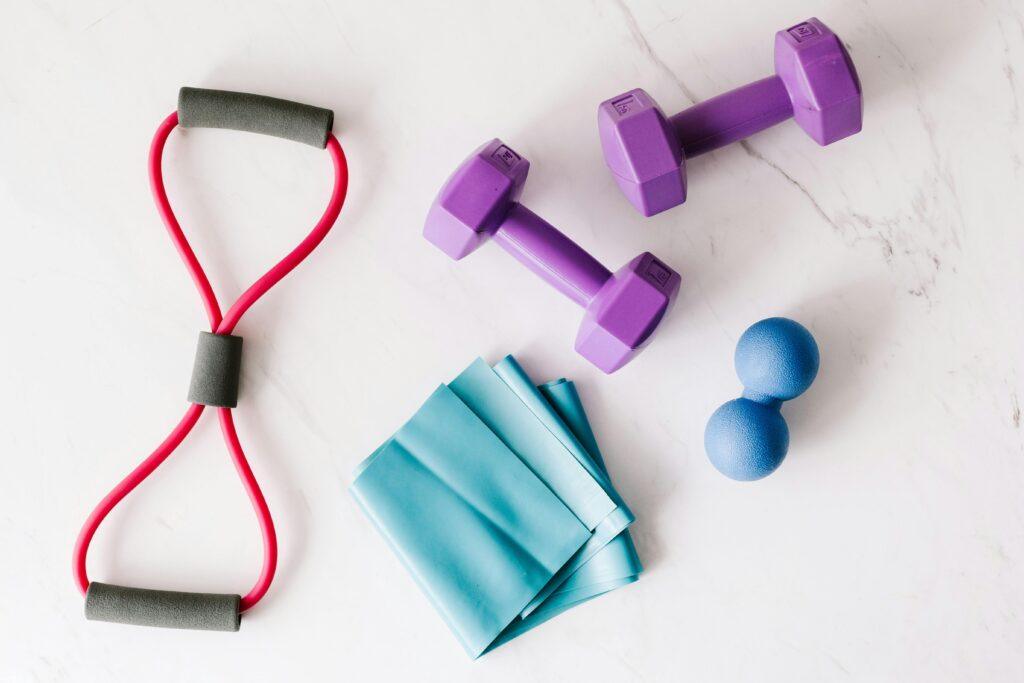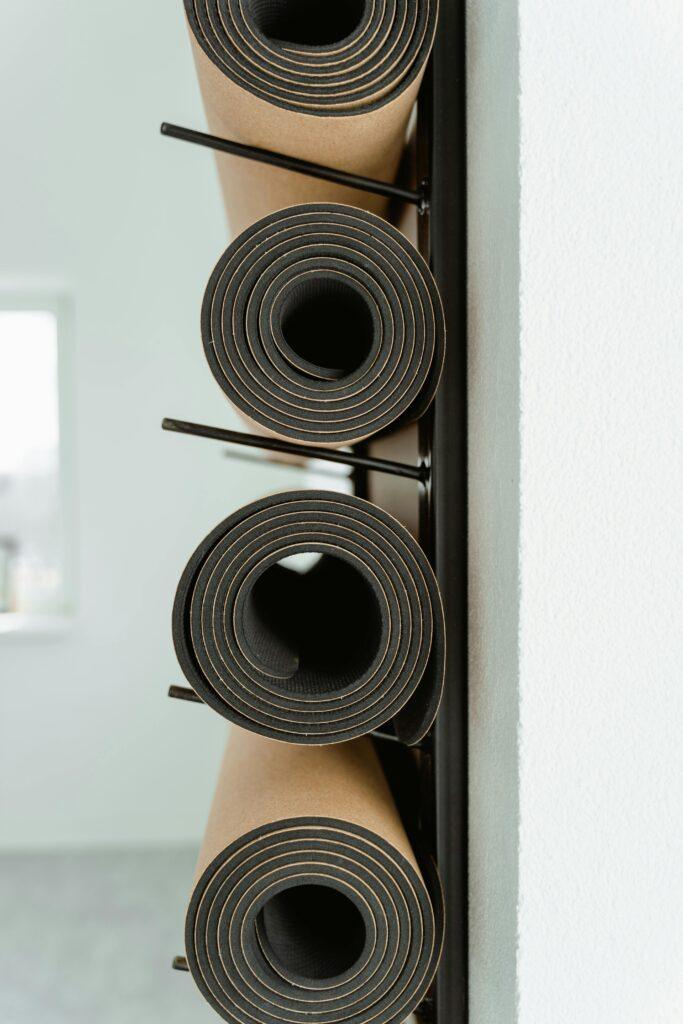
Daily Exercises for Wheelchair Users to Stay Active & Healthy
Staying active is essential for everyone—but for wheelchair users, regular exercise can significantly improve circulation, reduce muscle stiffness, and boost overall well-being. Maintaining a consistent movement routine can also enhance posture, increase energy levels, support mental health, and even improve sleep quality.
Whether you’re looking to increase strength, improve flexibility, or enhance cardiovascular health, daily movement can make a big difference—not just physically, but emotionally and mentally, too. And the best part? You don’t need access to a full gym or specialized equipment to get started.
From resistance band routines to simple stretches and seated cardio, we’ve compiled a breakdown of effective, accessible exercises that can be done right from your chair—perfect for at-home fitness and adaptable to your pace. Let’s dive in and keep your body moving, strong, and supported every single day.

Upper Body Strength Training
Building upper‑body strength helps with everyday tasks like transferring, pushing your wheelchair, or lifting objects—and it’s your engine for speed, endurance, and injury prevention. Aim to work these muscles 2–3 times a week on non‑consecutive days, leaving at least 48 hours for recovery. Start with light resistance, focus on form, and progress gradually.
Seated Shoulder Press
- Equipment: Dumbbells, resistance bands, or even filled water bottles.
- How to: Sit tall with your core engaged. Hold weights at shoulder height, palms forward. Exhale as you press straight up until your arms are fully extended but not locked. Inhale as you lower slowly to the starting position.
- Sets/Reps: 2–3 sets of 10–12.
Pro Tip: Keep your wrists stacked over your elbows to avoid strain, and think “rib cage down” to prevent lower‑back arching.
Biceps Curls
- Equipment: Dumbbells, resistance bands (loop the band under your chair’s footplate if possible).
- How to: With arms by your sides and palms facing up, curl the weight toward your shoulders while keeping elbows pinned to your torso. Lower under control.
- Sets/Reps: 2–3 sets of 12.
- Pro Tip: Slow the eccentric (lowering) phase to build more strength and minimize momentum.
Resistance‑Band Rows
- Equipment: Medium‑strength resistance band.
- How to: Anchor the band in front of you at chest height (doorknob, railing). Holding one end in each hand, sit tall with arms extended. Exhale and pull the band toward your rib cage, squeezing shoulder blades together. Pause, then return with control.
- Sets/Reps: 2 sets of 15.
Pro Tip: Imagine “putting your shoulder blades in your back pockets” for maximum mid‑back activation.
Seated Chest Press
- Equipment: Resistance band anchored behind your chair or cable machine if you have gym access.
- How to: Start with elbows bent at 90° and hands level with your chest. Press forward until your arms are straight, pause, then return slowly.
- Sets/Reps: 2 sets of 10–12.
- Why It’s Great: Balances the pulling motion of rows to keep shoulders stable and posture upright.
Overhead Triceps Extensions
- Equipment: One dumbbell, resistance band, or kettlebell.
- How to: Hold the weight with both hands, elbows pointing forward and tucked near your ears. Extend your arms overhead until fully straight, then lower behind your head without flaring elbows.
- Sets/Reps: 2 sets of 10–12.
Pro Tip: Keep your core braced; avoid flaring ribs to protect your lower back.
Lateral Raises (Scaption)
- Why It’s Great: Strengthens the often‑overlooked deltoid fibers that stabilize your shoulders during transfers and long pushes.
- Equipment: Light dumbbells or water bottles.
- How to: From a neutral position with palms facing each other, raise arms at a 30‑degree angle forward (the “scaption” plane) until shoulder height, then lower slowly.
- Sets/Reps: 2–3 sets of 12–15.

Flexibility & Mobility
Stretching can help prevent joint pain, reduce muscle tension, improve posture, and support better mobility throughout the day. For wheelchair users, consistent stretching helps combat stiffness from prolonged sitting and enhances range of motion in areas like the neck, spine, shoulders, and hands.
These gentle stretches can be done daily, especially before or after strength training or cardio, to warm up or cool down your body. Even a few minutes a day can make a noticeable difference over time.
Neck Rolls
- How to: Sit comfortably with your back straight. Drop your chin gently toward your chest and begin to roll your head slowly in a circular motion, moving from shoulder to shoulder. Avoid straining or forcing the movement.
- Duration: 30 seconds in each direction
- Why It Helps: Relieves tension from prolonged screen time or pushing your wheelchair, and improves neck mobility.
Pro Tip: If full circles feel uncomfortable, try slow half-circles from shoulder to shoulder instead.
Seated Spinal Twist
- How to: Sit up tall with your feet (or footrests) stable. Place your right hand on your left knee or thigh and your left hand on the backrest or wheel. Gently twist your torso to the left, looking over your shoulder. Keep your spine long and avoid slouching. Repeat on the other side.
- Hold: 15–30 seconds per side
- Why It Helps: Improves spinal flexibility, eases lower back tension, and promotes better posture—especially helpful after long periods of sitting.
Pro Tip: Use your breath to deepen the twist—inhale to lengthen, exhale to gently rotate.
Wrist & Finger Stretches
- How to: Start by extending your arms in front of you. Open and close your hands into fists several times. Rotate your wrists clockwise and counterclockwise, then stretch your fingers by gently pulling them back with the opposite hand.
- Duration: 1–2 minutes total
- Why It Helps: Essential for anyone who relies heavily on their hands for mobility, transferring, typing, or using assistive devices. Prevents stiffness and overuse injuries like carpal tunnel.
Pro Tip: Try soaking your hands in warm water before stretching to improve flexibility.

Cardiovascular Exercises
Getting your heart rate up is one of the best things you can do for your body and mind. Cardiovascular (aerobic) exercise improves heart and lung function, boosts circulation, increases energy, and sharpens mental clarity. It can even help manage weight, reduce anxiety, and improve sleep.
For wheelchair users, cardio can be easily adapted into a seated routine and still offer powerful benefits. Aim for 20–30 minutes most days of the week, but if you’re just getting started, begin with shorter bursts and build your endurance over time.
Seated Arm Circles or Punches
- How to: Sit upright with your arms extended out to the sides or in front of you. Make small to medium circles, or perform fast-paced boxing-style punches toward the air.
- Duration: 2–3 minutes per set, repeat 3–5 times with 30–60 seconds rest between sets
- Why It Works: Elevates your heart rate while strengthening shoulders, arms, and core. Great for warming up or doing a quick sweat session on busy days.
Fun Tip: Try timing punches to the beat of a song for added rhythm and motivation.
Seated Dancing or Rhythmic Movement
- How to: Put on your favorite upbeat playlist and let your body move to the music. Wave your arms, roll your shoulders, sway your torso, and bounce to the beat.
- Duration: 10–15 minutes or as long as you enjoy it
- Why It Works: Combines cardio with creativity, improving coordination, range of motion, and mood.
- Why You’ll Love It: It doesn’t feel like exercise—it feels like joy! Dancing also offers a natural mood boost thanks to endorphins.
Variation: Follow along with a seated Zumba or dance class on YouTube if you want extra structure.
Wheelchair Propulsion Drills (if safe to do)
- How to: In a safe, flat area (like a driveway, indoor track, or empty hallway), propel your wheelchair forward for 30 seconds at a moderate pace, then increase speed for 30 seconds. Repeat for several rounds, adjusting intensity as needed.
- Interval Idea: 1 minute slow, 30 seconds fast. Repeat for 10–15 minutes.
- Why It Works: Builds cardiovascular stamina and strengthens arm, chest, and shoulder muscles used in daily movement.
- Safety Tip: Make sure your tires are properly inflated and the surface is free of debris. Always warm up and cool down.

Why It Matters
Regular cardio keeps your heart strong and your energy high—but its benefits go far beyond the physical. For wheelchair users, consistent aerobic activity helps reduce the risk of blood clots and pressure sores, promotes better digestion, enhances respiratory function, and improves mood and cognitive performance by releasing feel-good endorphins. It also plays a key role in maintaining muscle tone and stamina, both of which are crucial for mobility and daily independence.
More importantly, cardio reinforces a sense of empowerment. It reminds you that movement doesn’t have to look the same for everyone to be meaningful. You don’t need a treadmill, perfect form, or a high-tech gym to feel the rhythm of your body working for you.
It’s not about perfection—it’s about consistency, intention, and showing up for your body in whatever way you can. A few minutes of motion every day can compound into real, lasting change—physically, mentally, and emotionally.
So whether you’re dancing in your chair, shadowboxing in your living room, or rolling in timed intervals down a hallway, cardio becomes more than exercise—it becomes a celebration of your resilience, strength, and self-care.
Own your movement. Honor your body. And keep showing up—because you deserve to feel strong and alive, every single day.
Tips for Success
- Start slow: If you’re new to exercise, begin with 10–15 minutes a day.
- Listen to your body: Modify movements if you feel discomfort or strain.
- Stay consistent: A little every day adds up over time.
- Hydrate & fuel: Drink water and eat balanced meals to support recovery.
Tools that Can Help
- Resistance bands: Affordable and versatile for strength training
- Light hand weights: Ideal for biceps, shoulders, and triceps
- Timer apps: Keep track of exercise and rest intervals
Final Thoughts
Regular cardio keeps your heart strong and your energy high—but its benefits go far beyond the physical. For wheelchair users, consistent aerobic activity helps reduce the risk of blood clots and pressure sores, promotes better digestion, enhances respiratory function, and improves mood and cognitive performance by releasing feel-good endorphins. It also plays a key role in maintaining muscle tone and stamina, both of which are crucial for mobility and daily independence.
More importantly, cardio reinforces a sense of empowerment. It reminds you that movement doesn’t have to look the same for everyone to be meaningful. You don’t need a treadmill, perfect form, or a high-tech gym to feel the rhythm of your body working for you.
It’s not about perfection—it’s about consistency, intention, and showing up for your body in whatever way you can. A few minutes of motion every day can compound into real, lasting change—physically, mentally, and emotionally.
So whether you’re dancing in your chair, shadowboxing in your living room, or rolling in timed intervals down a hallway, cardio becomes more than exercise—it becomes a celebration of your resilience, strength, and self-care.
Own your movement. Honor your body. And keep showing up—because you deserve to feel strong and alive, every single day.

References
Centers for Disease Control and Prevention (CDC)
- Physical Activity for People with Disabilities
https://www.cdc.gov/ncbddd/disabilityandhealth/pa.html
→ Offers general guidelines and benefits of physical activity for individuals with mobility limitations.
National Center on Health, Physical Activity and Disability (NCHPAD)
- Exercise & Physical Activity Resources for People with Disabilities
https://www.nchpad.org
→ A leading source for inclusive fitness programs, exercises, and health information for wheelchair users.
Mayo Clinic
- Exercise: 7 Benefits of Regular Physical Activity
https://www.mayoclinic.org/healthy-lifestyle/fitness/in-depth/exercise/art-20048389
→ Covers broad benefits of exercise, including improved mood, heart health, and energy.
Christopher & Dana Reeve Foundation
- Exercise and Fitness for Wheelchair Users
https://www.christopherreeve.org
→ Provides guidance on wheelchair cardio, strength training, and flexibility with safety tips.
American College of Sports Medicine (ACSM)
- Exercise is Medicine®: Physical Activity Guidelines for Individuals with Spinal Cord Injury
https://www.exerciseismedicine.org
→ Offers evidence-based recommendations on how much and what type of exercise is beneficial for people using wheelchairs.
World Health Organization (WHO)
- Physical Activity and Adults
https://www.who.int/news-room/fact-sheets/detail/physical-activity
→ Recommends 150 minutes of moderate-intensity aerobic physical activity per week, adaptable to all ability levels.
PubMed / Journal of Rehabilitation Research & Development
- Effects of Arm Crank Exercise on Cardiovascular Fitness in Wheelchair Users
https://pubmed.ncbi.nlm.nih.gov/
→ Studies showing the cardiovascular benefits of upper-body exercise for individuals with mobility impairments.
Ability360 Sports & Fitness Center
- Adaptive Fitness Programs and Seated Exercise Ideas
https://ability360.org
→ Practical examples of real-life cardio and strength exercises for wheelchair users.


